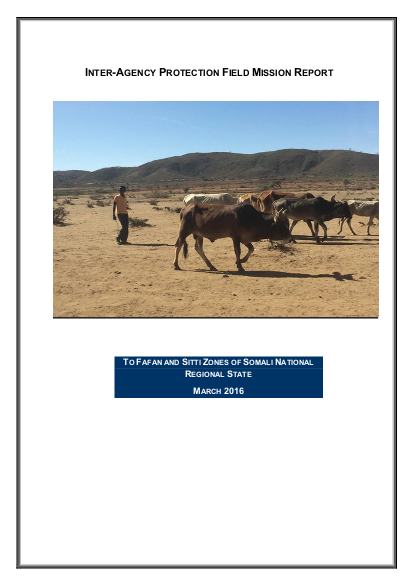
The Somali National Regional State is one of the regions in Ethiopia most affected by the effect of the current drought. According to the December 2015 Hotspot classifications, 24 Woredas in Somali region are priority 1 hotspot Woredas while the other 45 Woredas are classified priority 2. According to the International Organization for Migration (IOM)’s Monthly Internal Displacement Updates (MIDU) and quarterly Internal Displacement Monitoring Reports (IDMR), a total of 147,714 individuals or 24,619 households have been displaced due to El Niño phenomenon between September 2015 and February 2016. Of which 77,448 individuals were displaced due to drought, 53,028 individuals due to flooding and 17, 238 due to conflict. As of February 2016, 53,028 or 36 per cent of the total El Niño induced IDPs have returned to their places of origin; whereas the remaining 94,686 or 64 per cent are still in displacement. Reports from the Somali Regional State (SRS) circulated on 03 March, 2016 has shown that the number of drought induced IDPs in Sitti zone has increased to 90,930 individuals or 15,155 households, of which 30,007 are children under the age of 18 years old. This indicates that the number continues increasing from time to time. The Somali regional state hosts 354,277 protracted IDPs which is 70.5 percent of the national IDP population. As per the 2015 Meher assessment, the current drought, worsened by El Niño, has had a devastating impact on the Fafan and Sitti Zones in Somali region.
The Inter-Agency Protection Field Mission was composed of the following agencies: Danish Refugee Council (DRC), International Organization for Migration (IOM), United Nations High Commissioner for Refugees (UNHCR), United Nations Office for the Coordination of Humanitarian Affairs (OCHA), United Nations International Children’s Emergency Fund (UNICEF) and United Nations Population Fund (UNFPA). The mission visited 9 IDP sites (2 in Tuliguled and 5 in Babile Woredas) in Fafan and (2 in Shinille Woreda) in Sitti Zones between 29 February and 2 March 2016. All the Woredas visited are priority 1 drought hotspot Woredas, according to the HRD (2016). The mission benefitted from the leadership of and facilitation by the Regional authorities: Disaster Prevention and Preparedness Bureau (DPPB), Bureau of Women and Children Affairs (BoWCA), and Zonal, Woreda and Kebele Administrators. The Zonal Early Warning Coordinators for Fafan and Sitti Zones, and an official from BOWCA joined the mission. A presentation was made by BOWCA on the findings of Child Protection Assessments conducted in the region the past few weeks.